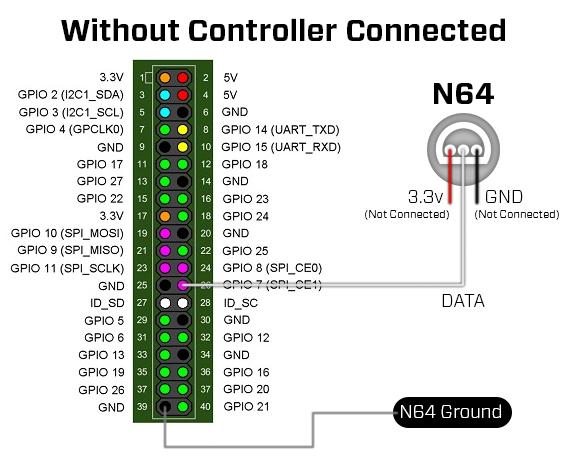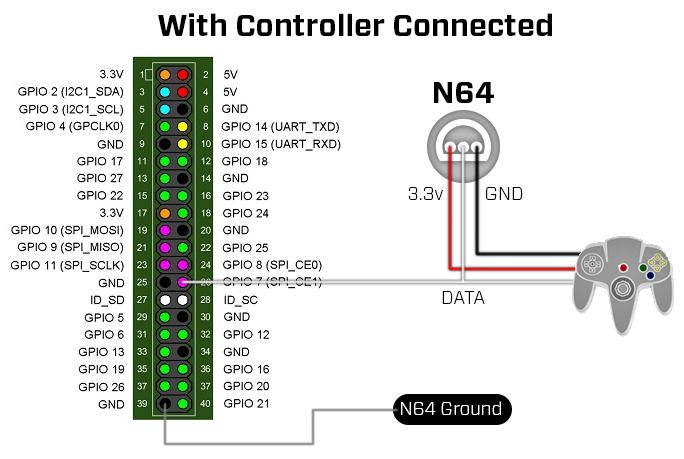To give some context, I am trying to emulate controller input to the N64 via a GPIO pin on the Raspberry PI.
In an attempt to accomplish this, I have one of the PI's GPIO's in a pull-up configuration connected to the data line of the N64 controller input on the front of the system. Here's what that looks like:

In this configuration, I see the N64 system pull the line high when it's turned on, but there is no data request or any further change.
However, when I additionally attach a controller to all three inputs (data, ground, vcc) like this:

I am able to monitor data flowing between the system and the controller with the PI.
So, finally, the question: how is the N64 detecting the controller is connected, and how might I go about emulating that? Is it the resistance between the 3.3v and GND line? Something else entirely?
This is my first post, so let me know if I've betrayed any stack exchange policies, or if you need any additional information.
Thanks for your help!

